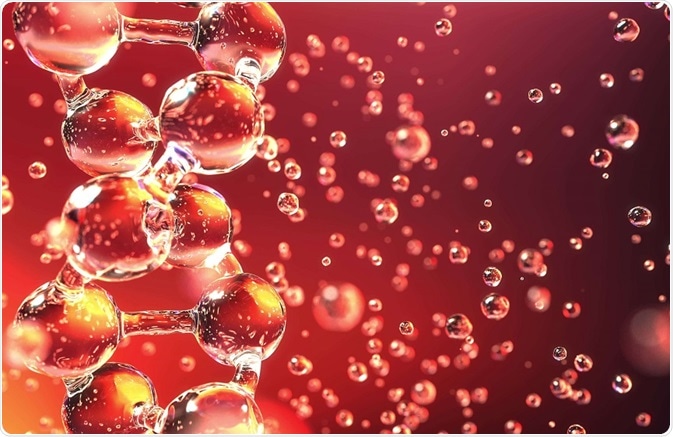In-cell NMR is a technique used to find out information about the structure of cellular molecules, in order to establish their function in vivo.
 Credit: Novikov Aleksey/Shutterstock.com
Credit: Novikov Aleksey/Shutterstock.com
In-cell NMR involves the expression of NR-active isotopes, including 15N, 13C, and 19F in a cell, followed by exposure to a the magnetic field at a particular resonance frequency.
The absorption and emission frequencies are then measured to derive the structure the molecule. Thus, this technique helps in uncovering the structure of molecules in their native state inside the cells.
Limitations of previous techniques
Currently, two major techniques are used to analyse the structure of molecules at atomic level. These are X-ray crystallography and nuclear magnetic resonance (NMR).
However, X-ray crystallography requires the sample to be in a diffracting crystal state, while NMR requires sample to be in an aqueous state. Thus, both these techniques require the sample to be altered from its native state, which may also alter the structure of the molecules involved.
Applications of in-cell NMR
Determining the 3D structure of proteins
In a recent study, three modified chelators were added which bound with di-or para magnetic Luthetium or Thulium inside cells. These protein samples were then expressed in Xenopus oocytes and the structures were subsequently analyzed using an in-cell NMR software called Rosetta. The structures derived using this method had higher resolution that the in vitro NMR methods.
Studying protein folding and aggregation
In-cell NMR can be used to investigate proteins as soon as they are synthesised inside cells. Thus, it can provide ways to study the productive folding of a protein in the cells’ active state and also unproductive ways of folding leading to formation of aggregates.
It can also help in visualizing the post translational modifications in the protein which lead to changes in the protein structure, functions, and their sub-cellular location inside a cell.
Studying protein dynamics in living cells
Proteins also show internal motions due to its internal dynamics. These internal dynamics or motions of proteins are of different nature: the side chain movements (pc to ns), loop motions (ns to us), movement of domains (us to ms).
These movements can influence the relaxation rate, dipole coupling, paramagnetic relaxation, and relaxation dispersion which can thus be captured using in-cell NMR.
STINT-NMR
In “STINT-NMR”, the proteins of a complex are expressed in a time-dependent manner. Instead of expressing the protein simultaneously as in the usual in-cell NMR, in this case, the NMR spectra is recorded as a function of time. This gives an indication of how the spectra changes in response to interaction between two proteins.
'SMILI–NMR’ to study protein-protein interaction
SMILI or Screening of small Molecule Interactor Library uses STINT NMR to produce complexes where one protein uniformly expresses NMR isotope such as 15N.
When ligands bind to the protein of interest, they can alter the NMR spectra giving an indication of the changes in the stability of protein-ligand complexes. SMILI-NMR can thereforre provide information on how small ligands interact with different protein complexes and their subsequent biological activities.
Sources:
- Protein dynamics in living cells studied by in-cell NMR spectroscopy. FEBS Letters.
- The Emperor's new clothes: Myths and truths of in-cell NMR. Archives of Biochemistry and Biophysics.
- In-cell NMR: A new application. Phys.org.
Further Reading
- All Biochemistry Content
- An Introduction to Enzyme Kinetics
- Chirality in Biochemistry
- L and D Isomers
- Suzuki-Miyaura Cross-Coupling Reaction
Last Updated: Aug 24, 2018

Written by
Dr. Surat P
Dr. Surat graduated with a Ph.D. in Cell Biology and Mechanobiology from the Tata Institute of Fundamental Research (Mumbai, India) in 2016. Prior to her Ph.D., Surat studied for a Bachelor of Science (B.Sc.) degree in Zoology, during which she was the recipient of anIndian Academy of SciencesSummer Fellowship to study the proteins involved in AIDs. She produces feature articles on a wide range of topics, such as medical ethics, data manipulation, pseudoscience and superstition, education, and human evolution. She is passionate about science communication and writes articles covering all areas of the life sciences.
Source: Read Full Article